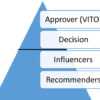Cold calling gets a bad rap, but with the right mindset and techniques, it can be your secret weapon in sales. Recently, a seasoned BDR shared insights that transformed my approach to cold calls, and I’m here to pass those gems on to you.👇
Cold calling isn’t about closing deals on the first call. It’s about building connections and setting up the next meaningful conversation.
When I started cold calling, I focused too much on pitching and not enough on listening. I’d rush through objections and miss key opportunities to connect. With these strategies, I’ve turned cold calls into warm, productive conversations.
1️⃣ Start with a Simple Question
→ Use a closed-ended question to quickly understand their situation and guide the call.
2️⃣ Focus on Conversations, Not Meetings
→ Your goal? Move the dialogue forward, not force an immediate commitment.
3️⃣ Pitch Like a Pro
→ Highlight a problem they might face and how your solution can help.
→ Personalize it to their role for maximum relevance.
4️⃣ Listen Actively
→ Engage naturally and adjust your tone to reduce stress during the call.
5️⃣ Handle Objections Gracefully
→ “Send me an email” doesn’t have to end the call. Respond thoughtfully to keep them engaged.
6️⃣ Follow-Up is Key
→ Prioritize setting up the next touchpoint over closing on the first call.
7️⃣ Be Human
→ Show empathy and approach the call as someone solving problems, not just selling.
By implementing these strategies, you’ll:
→ Build trust faster.
→ Set more follow-up calls.
→ Create meaningful relationships that drive results.
Cold calling can be one of the most challenging aspects of sales, but with the right approach, it can also be one of the most rewarding. Recently, I received some invaluable advice from a seasoned sales/BDR professional about the art and psychology of cold calling. Here’s a detailed breakdown of the strategies shared, aimed at making your cold calls more effective and engaging.
1. Framing the Initial Question
- Closed-ended Questions: Start your call with a closed-ended question related to ongoing conversations within the prospect’s company or community.
- Purpose: This helps you quickly understand their current situation and directs the conversation based on their response (yes or no).
2. Adopting a Conversation-centric Approach
- Goal: The main goal of a cold call should be to set up the next conversation, not necessarily to arrange a formal meeting.
- Inclusivity: Frame the call as part of a broader discussion happening in the prospect’s ecosystem, making them feel included and valued.
3. Crafting the Initial Pitch
- Problem Statement: Clearly articulate a high-level problem that the prospect might be facing.
- Solution: Briefly describe how your service or product can address this problem.
- Personalization: Tailor your pitch based on the prospect’s role and profile to make it more relevant.
4. Engaging Through Active Listening
- Natural Conversation: Engage in a natural dialogue to understand what matters to the prospect.
- Wave Theory: Be mindful of the peaks and valleys of stress in the conversation. Use process interrupters to manage these stress points and keep the conversation moving smoothly.
5. Handling Common Objections
- Preparedness: Be ready for common objections like “send me an email” or “I don’t have time.”
- Persistence: Keep the prospect engaged by continuously providing value and addressing their concerns thoughtfully.
6. Strategizing Follow-ups
- Next Conversation: Focus on setting up a follow-up conversation rather than closing a deal on the first call.
- Information Gathering: Use the call to gather valuable information that can be used in future interactions with the same or different prospects.
7. Humanizing Your Approach
- Empathy and Help: Position yourself as someone who is there to help, not just to sell.
- Relatable Scenarios: Use relatable scenarios and small truths to make the conversation more believable and engaging.
8. Practicing and Improving
- Role-playing Sessions: Regularly engage in role-playing sessions focused on specific personas or conversation types.
- Team Feedback: Utilize feedback from your team to refine your approaches and learn from each other’s experiences.
9. Psychological Tactics
- Process Interrupters: Techniques to disrupt the prospect’s initial resistance and bring them into a state of active listening.
- Building Trust: Gradually build trust by providing useful information and showing genuine interest in the prospect’s needs.
Implementation Tips
- Consistency: Apply these strategies consistently across all your cold calls.
- Customization: Tailor your approach based on the prospect’s responses and the specific context of each call.
- Documentation: Document learnings from each call to continuously refine your approach.
Cold calling doesn’t have to be a daunting task. By focusing on understanding the prospect’s context and setting up the next meaningful conversation, you can build stronger relationships and drive better results. These strategies have been game-changers for me, and I hope they will help you master the art of cold calling too.










